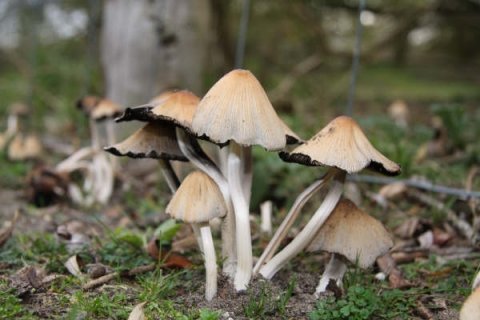The Hannecartbos was laid out on an area of grasslands and dune fields during the twenties of the previous century. The then owner, the Hannecart family, wanted to create a hunting ground. At first the aim was not to stimulate biodiversity. That is why fast-growing trees were chosen. Not all the 48 hectares were forested. Grassland is not only located on the Nort-eastern edge, but also on the Southern edge, where some small early mediaeval head dunes are situated as well. Here and there the forest looks like a park, like an overgrown alley with lined up trees. You can still see the wood banks which demarcated the dune fields are also still recognizable. A "waterloop-Zonder-Naam" ("Unnamed Watercourse"), because it is called that way, is more notable than it looks. It is one of the rare cavities at our coastline. it is fed by fresh lime-rich soil water of the surrounding dunes which is drainedoff into the Yzer. The soil water in the area remained almost undisturbed. But the wooded area had been decaying for years, with dying trees and overgrown by nettles, elder and bramble. It was high time for a change. After the government had purchased the forest to make it a nature reserve, a plan was made to restore the forest. Six hectares of dying trees were cut to restore the original grasslands. Shetland ponies graze the area. The stream was cleaned up and its course regulated by stows. Native trees will be planted to make sure that the forest has more diversity.

